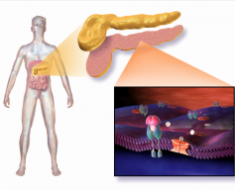
Just as Goldilocks sought porridge that was “just right,” St. Jude Children’s Research Hospital scientists reported that targeting “just right” levels of a mutant protein may offer a novel therapeutic approach to some cases of childhood leukemia. The findings appear today in the journal Nature Communications.
“The results suggest a new vulnerability that can be explored for treatment of about 10% of patients with B-cell acute lymphoblastic leukemia,” said corresponding author Jinghui Zhang, Ph.D., chair of the St. Jude Department of Computational Biology.
These B-ALL cases have a chromosomal rearrangement that creates a mutant gene. That gene fuses a segment of the IGH gene with part of the oncogene DUX4, CRLF2 or another gene.
The study provided the first detailed genomic and epigenomic map of the IGH-DUX4 rearrangement and discovered that the translocation occurs on the silenced copy of the IGH gene. Based on the findings, Zhang and her colleagues suggested the “Goldilocks principle” as a model for the IGH-DUX4 contribution to B-ALL. B-ALL accounts for about 80% of childhood ALL, making it the most common childhood cancer.
Long-read sequencing
Zhang and other St. Jude researchers previously reported the association between pediatric ALL and the IGH-DUX4 chromosomal rearrangement. In this study, scientists used long-read, whole genome and transcription sequencing and other methods to provide a precise map of the complex genomic region where the translocation occurred. Long-read sequencing uses DNA segments that are about 10 times longer than more commonly used sequencing techniques.
The sequencing showed that the chromosome rearrangement puts DUX4 close to a DNA segment that normally functions as an enhancer of IGH expression.
DUX4 is a transcription factor that regulates gene expression. The protein is normally expressed early in embryonic development and not during development of B cells. But when researchers checked, they found DUX4 expression was much higher in B-ALL patients with the IGH-DUX4 rearrangement than during normal embryonic development.
Combining long-read sequencing with epigenetic and 3-D genomic profiling at the IGH region, yielded a surprise. Researchers found that the IGH-DUX4 rearrangement was silenced on the IGH allele.
B cells and Goldilocks
IGH rearrangement is a normal part of B cell development and essential for antibody production. During the process, one copy of the IGH gene is randomly selected for expression. Expression of the other is epigenetically reduced by about 90%.
Researchers expected to find the fusion gene was selected for activation and expression. “When it comes to oncoproteins, the conventional wisdom is that more is often better for tumor cells,” Zhang said. “We found the opposite was true.”
Co-author Tanja Gruber, M.D., Ph.D., of St. Jude Oncology, and her colleagues showed that adding DUX4 to mouse blood stem cells or to IGH-DUX4 B-ALL cells increased cell death via its suicide (apoptotic) pathway. The increase mirrored DUX4 levels. “The potential of DUX4 as a source of oncogenic stress may provide a unique angle for IGH-DUX4 treatment,” Gruber said.
Source: Read Full Article





